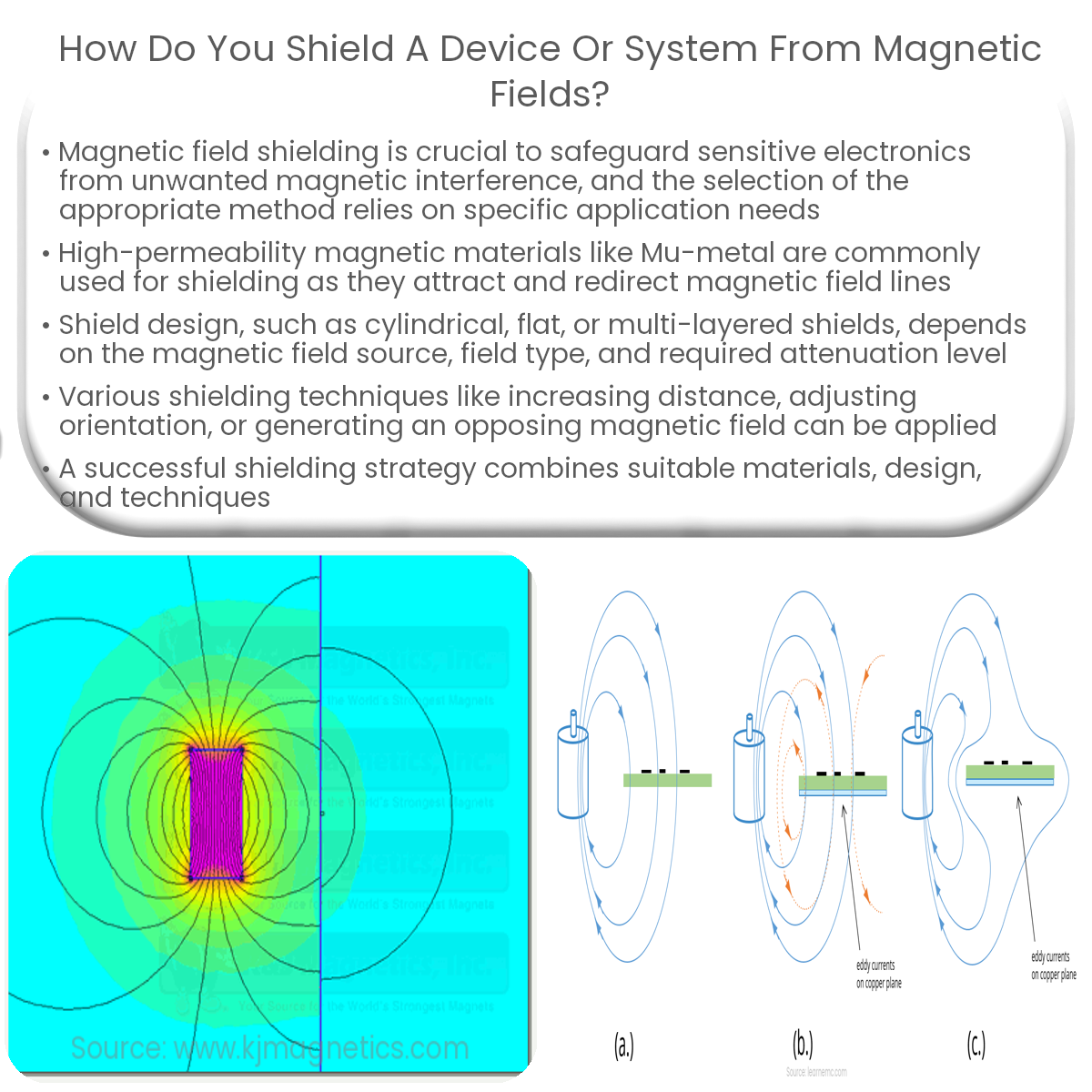To shield a device from magnetic fields, use high-permeability materials, design effective shields, and apply techniques like distance and orientation.
Shielding Devices and Systems from Magnetic Fields
Magnetic field shielding is essential for protecting sensitive electronic devices and systems from unwanted magnetic interference. There are several approaches to achieve effective magnetic shielding, and selecting the appropriate method depends on the specific application and requirements.
Materials for Magnetic Shielding
High-permeability magnetic materials, such as Mu-metal, are commonly used for magnetic shielding. These materials have the ability to attract and redirect magnetic field lines, minimizing their effect on the protected area. Other materials, like ferrites, can be used in certain cases as well.
Designing Shields
The design of a magnetic shield depends on the source of the magnetic field, the type of field (static or varying), and the required attenuation level. Some common shield designs include:
Shielding Techniques
There are several shielding techniques that can be applied depending on the situation:
Ultimately, shielding a device or system from magnetic fields requires a combination of appropriate materials, shield design, and shielding techniques. Evaluating each of these factors will help ensure that sensitive electronics are adequately protected from magnetic interference.


